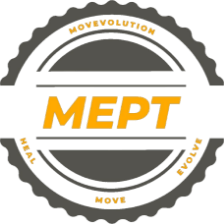Treating folks, like you, who move for a living and love to move

Blogs
Author: Richard Symister
YOUR BODY NEEDS THIS AFTER THE NEW YORK MARATHON!Running the NYC Marathon is hard on your body, regardless of your age, fitness, or training level. Joints get abused. Ligaments get tested. Muscles get loaded, often overloaded, and strained.
After intense training, there are some guidelines to follow to reduce pain, inflammation, and injury, to ensure future running wellness. These guidelines are that much more critical after running a 26.5 miler.
REST AND RECOVERY: Get Some Zzz’s
Your body heals as you sleep. “Sleep one extra minute per night for each mile per week your train.” — The 25 Rules of Running by Bob Cooper, Runner’s Word.
So after the marathon, get an extra 26 minutes of sleep.
Your muscles and joints need recovery time before returning to your normal training intensity. For every mile you race, take a day off for recovery before returning to hard training” — the late Jack Fosters, the masters world record holder (2:11:18) from 1974 – 1990. Ran 26. 5 miles?
Wait 26 days before training hard for another race.
After the NY marathon, your body is craving carbs to replenish glycogen for energy and protein for muscle repair, and you have about a 30-minute window to shut down the stress response to exercise, including cortisol. How much you need depends upon your weight, training intensity, and race duration. “Ideally the carb-protein ratio should be 4-to-1.” – Nancy Clar, R.D. author of Food Guide for Marathoners.
HYDRATION: Know your sweat rate.
- Determine your pre-exercise weight.
- Determine the number of fluid ounces consumed during activity (16 ounces = 1 pound).
- Determine your post-exercise weight.
- Drink 24-32 ounces of water or sports drink for every 1 pound lost.
BODYWORK/MANUAL THERAPY: Relax and heal.
Not only does it feel great, but it can also help speed recovery, reduce muscle soreness, and facilitate healing. Use caution during the first 48 hours after the marathon, as your muscles are very sensitive. If you get a massage, schedule it for a few days after the race.
- Swedish massage utilizes long, flowing strokes of various pressure, although usually light, to release muscle tension and increase blood flow.
- Active Release Technique, commonly known as A.R.T., is a massage technique that combines movement with specific, deep pressure to help relieve muscle adhesions and reduce scar tissue buildup. During an A.R.T session, the therapist uses his or her hands to evaluate the texture, tightness, and mobility of the soft tissue and then works to break up these adhesions with their hands, as well as the movement of the muscle. Swedish massage is perhaps the most well-known of the common massage modalities and is often associated with relaxation and pampering. However, Swedish massage can also benefit runners, especially before big competitions.
- Trigger point therapy is a massage modality that targets muscle knots and areas of referred pain in the muscle tissue. Therapists target and find knots in the muscles or areas of referred pain and use deep pressure to help loosen the adhesions. Like A.R.T., trigger point therapy is best used to treat injuries. Specifically, trigger point therapy is effective in the treatment of IT band tightness, calf strains, and hamstring injuries.
- Most runners are familiar with deep tissue massage, which is often confused with deep pressure (e.g., when you tell the therapist to “go harder”). Deep tissue massage targets both the superficial and deep layers of muscles and fascia and are often quite intense as a result of the deliberate, focused work. Deep tissue massages typically focus on a few specific problem areas and, unlike trigger point therapy, work the entire muscle. Because runners often have tight spots and interconnected issues when volume and intensity are high, deep tissue massage is often the modality of choice during hard training segments.
Post-Marathon Special
26.5 miles equals 26.5 minutes equals $26.50*
Post-NY Marathon Body Work & Manual Therapy
November 14-18th, 2014
*Proof of NY Marathon participation required
Contact US to book your appointment
MovEvolution Physical Therapy
Fort Greene, Brooklyn, NY
(718) 522-2658
References
- 3 Common Marathon Tapering Mistakes in the Last Three Weeks
- What to Eat the Week of a Marathon
- The Final Marathon Countdown: 15 Expert Race-Week Tips
- What to Do the Week Before your Marathon or Half marathon
- Seven Days: The Final Pre-Marathon Week
- Nutritional Timing for Sports Performance
- Journal of Strength and Conditioning
- Feed for Speed: Sports Nutrition for Peak Performance: Present by Jon Vredenburg, MBA, RD, CSSD, LD/N, HFS, Manhattan, NY, Novebmer 14, 2012
- Sports Medicine Division Hosts Marathon Readiness Course for Runners: “Ready, Set, Go— A Running Health and Injury Prevention Course” Presented by The Hospital for Joint Diseases at NYU Langone Medical Center, New York, NY, October 9, 2010

